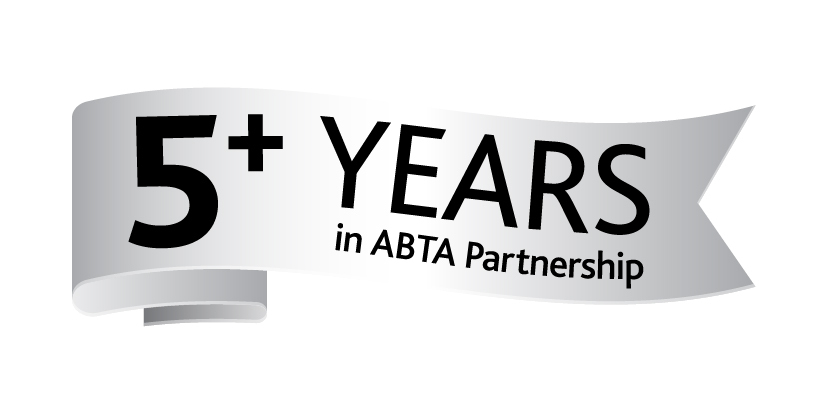There’s been a lot of noise lately about the return of the ‘lates’ market in travel – and with good reason. For many travel agents and operators, late bookings have become the new normal. But while the headlines may shout ‘the market is back’, the reality is far more nuanced. For travel brands to truly benefit, a smarter, more focused approach is needed.
Why the lates market matters right now
We’ve heard from the likes of Not Just Travel (NJT) that April experienced a dip in sales, but the cause wasn't strictly down to demand. As NJT co-founder Steve Witt pointed out, a good chunk of their 720 consultants were off on holiday themselves. With those agents now back in action, sales are reportedly 2.5 times higher year-on-year, particularly in the last-minute bracket.
“I think we are just going to see a continued upward trend for last-minute bookings. A lot of people have still not booked their summer holiday, families and couples alike. Prices are super keen, people are saying all the key operators have a lot of capacity, so there will be some great pricing.”
Jet2 backs this up with its trading update. Summer 2025 capacity is up 8.3% on last year, yet late bookings are still dominating. With limited forward visibility, they’re seeing more flight-only bookings and only modest increases in package prices. That tells us something: consumers are hanging back for a better deal, or only just getting round to booking a trip.
So, what’s driving this behaviour?
Some of it is due to timing - Easter was late this year, the cost-of-living squeeze continues and political factors such as Trump’s tariffs are spooking parts of the market. But underneath it all is a clear trend - people still want holidays; they just want to book them later. And if they’re getting a good deal, even better.
What the data tells us
At Adido, we’ve been tracking this pattern for some time. Our own data from the first quarter of 2025 shows a rise in last-minute interest, particularly on the high street, but not necessarily online - at least not for overseas travel.
We’re not seeing a rush of last-minute online searches for traditional summer holiday hotspots like Spain, Greece or Turkey. Instead, there’s been a marked shift towards staycations. UK holiday-related searches were up around 30% and for many, the ease and affordability are encouraging people to stay local.
Interestingly, luxury remains consistent, with no noticeable increase in high-end, last-minute bookings. These travellers continue to plan well in advance, and agents should focus on nurturing those longer-term relationships rather than chasing quick wins.
So, what should travel brands be doing now?
1. Get specific with paid search
If you’re running PPC campaigns, now’s the time to refine your targeting. Add qualifiers such as ‘last minute’, ‘deal’, ‘offers’ or ‘2025’ to your standard keywords. For instance, switch ‘family villa in Sardinia’ to ‘last minute family villa in Sardinia’. Small tweaks like this help capture intent and pull in those browsing in a hurry.
2. Use scarcity to drive action
Your messaging matters. ‘Still time left!’ or ‘Only 3 rooms remaining’ plays on scarcity and urgency. Spread this across your social media channels, newsletters and website banners. It’s a tried and tested technique, but one that performs especially well during a busy lates period but should always be grounded in truth to avoid causing potential brand harm.
3. Build a dedicated lates hub
If you’ve got the bandwidth, create a dedicated ‘Last Minute’ or ‘2025 Deals’ page on your site. Not only does this help with SEO, but it also gives your campaigns a clear destination to drive traffic to. It can be updated regularly with available product and last-minute offers, keeping the content fresh and relevant.
4. Partner with deal-focused platforms
Don’t overlook platforms like Secret Escapes or TravelZoo. They already have warm audiences who are primed for short lead time trips. A tie-up - even a simple listing - could drive strong returns with relatively little effort.
5. Run tailored email campaigns
Segment your database. If you have customers who are yet to book, now’s the time to nudge them. A bespoke email campaign with specific offers or prompts such as ‘Still dreaming of sun?’ can land well, especially if you make the booking process smooth and simple.
6. Prioritise human contact for certain audiences
In-person enquiries still hold value, particularly for an older demographic or for more complex trips. If a customer has had a good previous experience with an agent, they may not even bother shopping around online. Make sure your offline presence is aligned with your online messaging.
7. Keep an eye on planned global events
Lates will always grab headlines, but September and October are arguably more valuable for laying the groundwork for spring and summer 2026. By then, the FIFA World Cup buzz will start building and destinations like the US, Canada and Mexico will be back in the spotlight. While bookings have been slow so far, that’s mostly down to the lack of official packages. Once qualifiers are decided and marketing ramps up, expect a wave of interest - particularly from those with shorter booking windows.
Final thoughts
Yes, the lates market is a big talking point right now. But like any trend in travel, it’s not uniform. It’s patchy, price-sensitive and subject to all the usual external pressures. For travel brands to make the most of it, there needs to be a balance between fast-turnaround tactics and longer-term planning.
Stay alert, monitor what’s working (and what’s not) and remember - not every segment is acting the same way.





